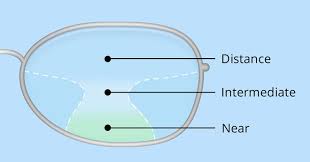What to Expect When You Are New to Progressive Lenses
YOUR VISIONABOUT LENSES
12/14/20232 min read


Progressive lenses, also known as multifocal lenses, are a popular choice for individuals who require correction for both near and distance vision. Unlike traditional bifocal or trifocal lenses, progressive lenses offer a seamless transition between different visual distances, allowing for a more natural and comfortable viewing experience.
However, transitioning to progressive lenses can be an adjustment, as they introduce a new way of seeing and require some time to adapt. In this article, we will explore what to expect when you are new to progressive lenses, including changes in vision, eye movement, and head movement.
1. Different Feeling with Your Vision
When you first start wearing progressive lenses, you may notice a slight distortion or blurriness at the edges of your vision. This is normal and is a result of the lens design, which incorporates multiple prescriptions to accommodate different visual distances. It may take a few days or weeks for your eyes to adapt and for this sensation to diminish.
Additionally, you may experience some difficulty with depth perception initially. This is because progressive lenses offer a wider field of vision compared to traditional lenses, which may require your brain to adjust to the new visual information. With time, your brain will learn to interpret the visual cues and your depth perception will improve.
2. Changes in Eye Movement
Progressive lenses require you to adjust your eye movement to find the optimal zone for clear vision. Unlike bifocal lenses, which have a distinct line separating the near and distance prescriptions, progressive lenses offer a smooth transition between the two. This means that you will need to learn to move your eyes up and down the lens to focus on different distances.
Initially, you may find yourself tilting your head or moving your eyes excessively to find the right spot for clear vision. However, with practice, you will become more comfortable with the lens design and find it easier to locate the appropriate zone for your desired visual distance.
3. Changes in Head Movement
When wearing progressive lenses, you may also notice changes in your head movement. As you adjust to the lens design, you may find yourself tilting your head slightly to optimize your vision. This is a natural response to find the clearest area of the lens for your specific visual needs.
Over time, as you become more accustomed to wearing progressive lenses, you will likely find that your head movement becomes more subtle and automatic. Your brain will adapt to the lens design, allowing you to effortlessly find the optimal visual zone without conscious effort.
In conclusion, transitioning to progressive lenses may initially feel different and require some time to adapt. Changes in vision, eye movement, and head movement are to be expected. However, with patience and practice, you will soon enjoy the benefits of clear vision at all distances that progressive lenses provide.
Address
Deja Vu Optics 157 Water St, Campbellton, NB, E3N 3L4
Contacts
Phone: 506-753-6000
Fax: 506-753-6040
Email: dvooffice@dejavuoptics.com




1 Hr Service
In Office Lab
Large Stock of Single Vision Lenses for Distance and Reading
